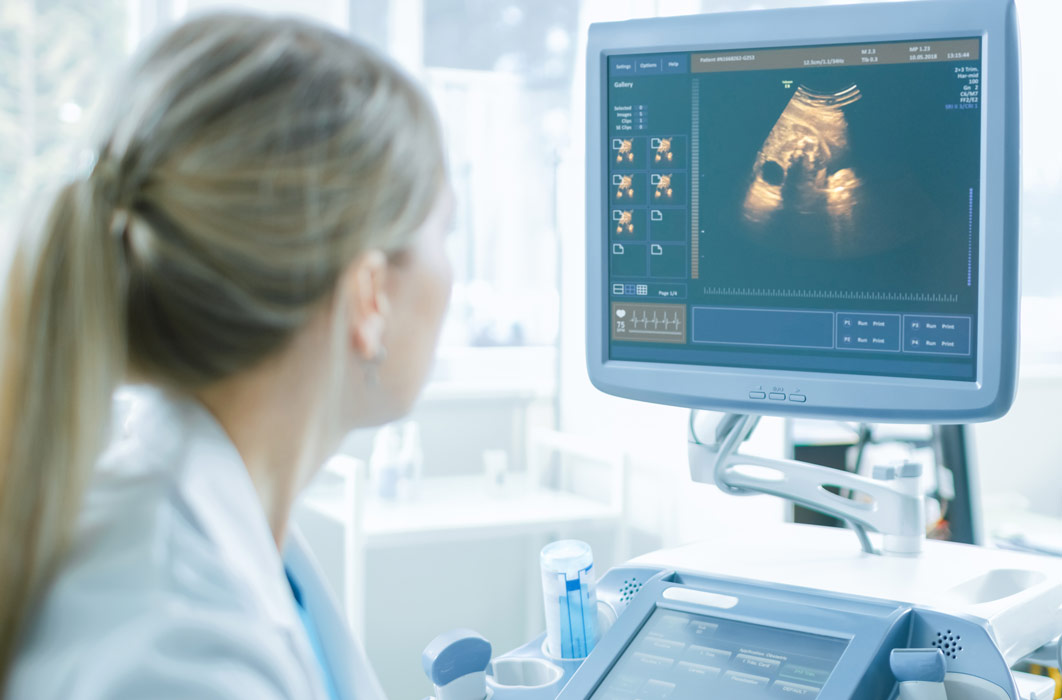ULTRASOUND

WHAT IS ULTRASOUND?
Ultrasound is an exam that uses sound waves to produce an image. The images are obtained with a small ultrasound probe passed over the patient that both sends and receives sound waves. Ultrasound is a safe procedure and does not use any radiation.
What is ultrasound used for?
Ultrasound can be used for a variety of studies because it does not use radiation or x-rays to produce images. Some of the most common uses include:
- Pregnancy and fetal exams
- Examine the body’s internal organs, including the heart, liver, gallbladder, spleen, pancreas, kidneys, bladder, uterus, testicles and ovaries
- Blood flow measurements to check narrowing of blood vessels
- Guide needle for biopsies including breast biopsies
- Placement of catheters (small tubes) into blood vessels
- Detect stones in the gallbladder, bile ducts, or kidneys
How to prepare for an ultrasound
Typically, no special preparation is needed for most ultrasound examinations. Here are a few things to remember before a general ultrasound:
- Bring a copy of the order for the procedure from your referring physician, your insurance card, and photo identification
- Wear loose-fitting, comfortable clothing
- Take your usual medications
Depending on the type of ultrasound needed, some special preparation may be required. This can include:
- Female pelvis and pregnancy: Drink 4-6 glasses of water 1-2 hours before the examination. Do not pass urine for 2 hours before the test.
- Aorta: Do not eat or drink 4 hours prior to the exam
- Gallbladder: Do not eat or drink 6-8 hours prior to the exam
- Liver, pancreas or spleen: Do not eat or drink 6-8 hours prior to the exam
- Kidneys: Do not eat or drink 4 hours prior to the exam. One hour prior to the exam, please drink 24 ounces of water. Do not use the restroom until after the study
- Breast: Please bring prior mammograms and ultrasounds
What to expect during an ultrasound
Ultrasounds are painless and typically take less than 30 minutes. After being positioned on the table, a special warm gel is applied to your skin. The gel improves the transmission of sound waves between the body and the ultrasound transducer. Ultrasonic waves make no noise and cause no sensation, although pressure from the transducer might be slightly uncomfortable.
Generally, the technologist can review the ultrasound images in real-time. However, you may also be asked to dress and wait while the ultrasound images are reviewed.
In some ultrasound examinations, the transducer is attached to a probe and inserted into a natural opening in the body. These exams include:
- Transrectal ultrasound: The transducer is inserted into the rectum to view the prostate gland
- Transvaginal ultrasound: The transducer is inserted into the vagina to view the uterus, ovaries and developing baby
When your examination is over, you may resume your normal daily activities unless otherwise instructed by your doctor. One of our board-certified radiologists will review the images and send a report to your physician.